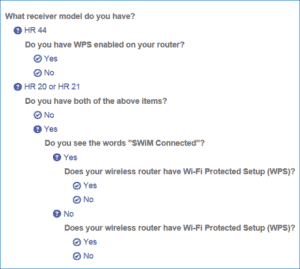What if you could know the consequences of an action in advance? This hypothetical has been central to the plots of many works of fiction, including the second “Back to the Future” movie, in which an almanac containing all major sports scores from 1950 to 2000 is carried back in time to 1955. As a result, the film’s antagonist is able to gamble on sporting events, safe in the knowledge that his bets will always pay off.
In real life, it’s not so easy to map out the future with certainty. However, tools such as decision trees can provide useful visualizations of how specific choices will play out, step by step, for support agents and result in acceptable resolutions for customers. Decision trees transform the uncertainty of handling complex customer interactions or creating new content into replicable, sustainable workflows, which improve the overall performance of your knowledge management (KM) system.
Decision trees provide paths through the troubleshooting forest
Traditionally, decision trees are associated with hand-drawn graphs, filled with branches denoting the possible outcomes of a tested  attribute. However, they can also be implemented directly into Knowledge Management software, so that agents have ready access to helpful flowcharts.
attribute. However, they can also be implemented directly into Knowledge Management software, so that agents have ready access to helpful flowcharts.
For example, say an agent received an email through a helpdesk channel. A corresponding decision tree might include tests for whether:
- The message requires an immediate response.
- It will take X number of minutes to respond to an inquiry.
- It came from a full-time or part-time employee.
- The sender had previously tried to reset his or her password.
Following these branches, the agent would eventually arrive at leaves containing the recommended decisions for each set of actions. In this case, he or she might recommend responding right away to the email (if the inquiry is simple) or open and assign a ticket (if it’s more complex). Throughout the decision-making process, the agent would have the tree available in the form of a script, to be assured of an optimal outcome.
Decision trees contribute to easier self-service
Let’s shift gears and look at how a decision tree could help an agent set up a self-service solution for customers. According to a Forrester Research survey, checking website FAQs surpassed making direct support calls as the most common customer service activity in 2015. Self-service reduces the workload on agents and can increase customer satisfaction by sparing them long hold/response times. However, it only works if its content is relevant and up-to-date.
Enter interactive solutions, including decision trees. For example, customers with highly technical issues might work through a flowchart that asks them if they have already taken particular actions, such as checking for a software update to a key program or ensuring that a stereo speaker was set to receive Bluetooth connections instead of audio-in from a cable. Via a KM platform, they could then be directed to specific versions of knowledge base resources for additional help. Decision tree session transcripts may also be included in analytics to see how and why the knowledge management platform prevented the need to open a ticket and assign it to an agent.
Decision trees within your knowledge management software
As charts that literally map out the future and account for many different possibilities, decision trees might seem like they’re too complex to create without huge investments of time and effort. Fortunately, the opposite is true: You can easily get started on decision trees for your KM system, thanks to the predefined templates within RightAnswers.
In addition to decision trees, RightAnswers enables the creation of other multi-step solutions such as step-by-step checklists. It is designed to empower agents to create, modify and locate the specific resources best-suited to each interaction, even if they begin their search with only general parameters about what they’re looking for.
Advance reporting features in the KM software, as well as its numerous integrations with essential business software from ServiceNow to Salesforce, further enhance the overall value of decision trees for both agents and customers. For example, you can receive reports about how many clicks a specified workflow required, see the most popular knowledge base resources over a given time and refine support scripts based on data from your CRU. Future decision trees can be designed knowing what did and didn’t work in the past.
With RightAnswers, you put better customer service within reach for everyone. Take a look at the rest of our blog for additional insights into the difference our knowledge management system can make for your organization, and set up a product demo to learn more.
